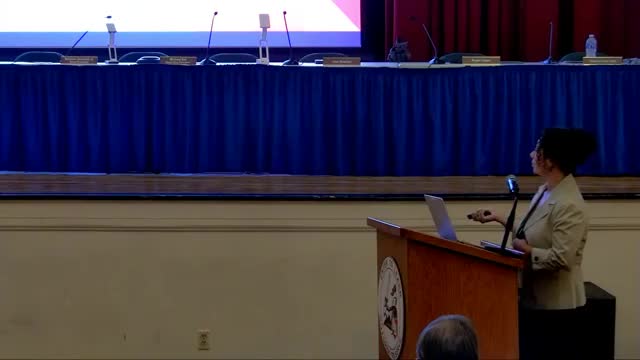New Jersey Implements ACCESS Test for Multilingual Learners English Proficiency Assessment
August 21, 2025 | Bound Brook School District, School Districts, New Jersey
This article was created by AI summarizing key points discussed. AI makes mistakes, so for full details and context, please refer to the video of the full meeting. Please report any errors so we can fix them. Report an error »

The Bound Brook School District held a board meeting on August 20, 2025, focusing on the ACCESS for Multilingual Learners (MLs) assessment and its implications for student progress in English language proficiency. The meeting began with an overview of the ACCESS test, which is administered annually to monitor the English proficiency of multilingual learners, including those whose parents have opted out of services. The test scores range from level 1 to level 6, with a minimum score of 4.5 required for students to exit the program.
During the meeting, it was reported that the district has seen an increase in the number of identified multilingual learners, rising from 644 students last year to 676 this year, with the potential to reach 743 by the start of the school year. This increase is attributed to an influx of students moving into the district from other states and districts, a trend observed nationwide as schools recover from the impacts of COVID-19.
The presentation highlighted the importance of the ACCESS scores, which are calculated based on four domains: listening, speaking, writing, and reading. The scores are used to inform teachers about students' capabilities and to tailor instruction accordingly. Individual reports were mailed to parents in both English and their home languages, ensuring accessibility of information.
A significant point of discussion was the success of the district's dual language program, which aims to promote biliteracy. It was noted that 40 students exited the program this year, with many achieving scores above the exit threshold. The data presented indicated that students who receive instruction in their native language tend to progress more rapidly in acquiring English proficiency.
The meeting concluded with a review of proficiency levels across various grades, showing notable improvements in language skills among students. The data suggested that students are making significant gains, particularly in the early grades, where the dual language program has been implemented. However, challenges remain for older students, especially those in middle and high school, where the lack of a dual language program may hinder their progress.
Overall, the meeting underscored the district's commitment to supporting multilingual learners and highlighted the positive outcomes of the bilingual education initiatives in place. The board plans to continue monitoring these developments and adapt strategies to further enhance student success in language acquisition.
During the meeting, it was reported that the district has seen an increase in the number of identified multilingual learners, rising from 644 students last year to 676 this year, with the potential to reach 743 by the start of the school year. This increase is attributed to an influx of students moving into the district from other states and districts, a trend observed nationwide as schools recover from the impacts of COVID-19.
The presentation highlighted the importance of the ACCESS scores, which are calculated based on four domains: listening, speaking, writing, and reading. The scores are used to inform teachers about students' capabilities and to tailor instruction accordingly. Individual reports were mailed to parents in both English and their home languages, ensuring accessibility of information.
A significant point of discussion was the success of the district's dual language program, which aims to promote biliteracy. It was noted that 40 students exited the program this year, with many achieving scores above the exit threshold. The data presented indicated that students who receive instruction in their native language tend to progress more rapidly in acquiring English proficiency.
The meeting concluded with a review of proficiency levels across various grades, showing notable improvements in language skills among students. The data suggested that students are making significant gains, particularly in the early grades, where the dual language program has been implemented. However, challenges remain for older students, especially those in middle and high school, where the lack of a dual language program may hinder their progress.
Overall, the meeting underscored the district's commitment to supporting multilingual learners and highlighted the positive outcomes of the bilingual education initiatives in place. The board plans to continue monitoring these developments and adapt strategies to further enhance student success in language acquisition.
View full meeting
This article is based on a recent meeting—watch the full video and explore the complete transcript for deeper insights into the discussion.
View full meeting
